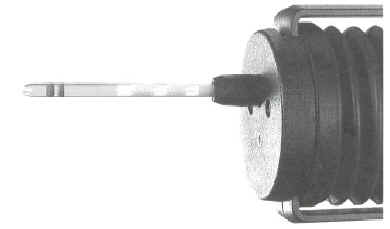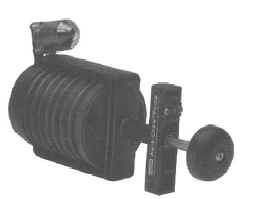![]()

|
FireDot.com |
![]()
Chemical Warfare Agents
Using Detector Tubes as a Means of Detecting Chemical Warfare Agents in HazMat Response

For years, doctors tubes have been a reliable and effective tool in HazMat response. Used for detecting a wide array of contaminants such as aromatic hydrocarbons (benzene, toluene), oxidizing gases (nitrogen dioxide, chlorine), and acid gases (hydrogen chloride). detector tubes have helped emergency responders quickly assess hazardous conditions.
In the past, the compounds of concern to HazMat responders primarily have been industrial compounds such as those listed above. However, the newest and most lethal concern to HazMat, law enforcement and security forces is the threat of chemical warfare attacks and need to respond to potential attacks.
Capable of mass destruction, chemical warfare agents are the number one concern in the industry today. Because chemical warfare agents are so deadly, they must be detected quickly and effectively in order to minimize the effects on those in the vicinity of an attack. Detector tubes offer a quick, reliable, and cost-effective means of detecting chemical warfare agents, helping HazMat professionals respond quickly to attacks.
Types of Chemical Warfare Agents
Chemical warfare agents fall into for major classes: nerve, blister, choking, and blood agents. See included table "A Summary of Chemical Warfare (CW) Agents" which lists the various agents, as well as their characteristics and exposure systems.
How Detector Tubes Work in Responding to Chemical Warfare Attacks
Detector tubes work by displaying a color change whenever a target chemical is detected. There are special chemicals inside the tube that react whenever they come in contact with the target chemical they are used to detect. This is by far the simplest means of detecting chemical warfare agents. Many detector tubes for chemical warfare agents are "go/no go" types - meaning that a color change is a positive indication of a chemical warfare agent.
Typical Sampling Procedure
-
Check detector tube pump for leakage.
-
Break off tips of detector tube.
-
Crush ampoule inside tube.
-
Insert tube into pump.
Manual Versus Automatic Sample-Taking
The most common and cost-effective means of taking detector tube samples is with a manual pump (squeezed by hand). Such pumps typically vary in cost between $150 and $ 300 each. However, because of the low detection range on CW agent detector tubes, often 30 or more pump strokes are required with manual pump. This can take a considerable amount of time and require significant repetition of pump-stroke motions.

Many manufacturers offer automatic detector tube pumps that can be preset for a fixed number of pump strokes and will perform the strokes automatically. Some automatic detector tube pumps can be programmed for up to 250 pump strokes and have means available in several different languages.
This table reviews the characteristics, exposure symptoms, and some examples of four different CW agent classes.
|
A Summary of Chemical Warfare (CW) Agents |
|||
| Agent Classes | Characteristics | Exposure Symptoms | Agent Examples |
| Nerve Agents | Attack nervous system, can enter body through inhalation or skin. |
|
|
| Blister Agents | Attack skin and can also be inhaled. Are absorbed rapidly into skin. |
|
|
| Choking Agents | Attack respiratory tract |
|
|
| Blood Agents | Attack Circulatory system.
Have rapid onset. |
|
|